Bergsetbreen is a short but steep glacier in eastern Jostedalsbreen. It dominates Krundalen and looks as if he could engulf the valley any moment. Not that long ago Bergsetbreen actually did.
Bergsetbreen is quite the restless glacier. No glacier reacts so strongly to changes in weather conditions as this one. If summers are relatively cool for a few years and winters bring plenty of snow, Bergsetbreen directly advances by dozens of meters. This also works the other way around: a few warm and dry years and the glacier recedes rapidly.
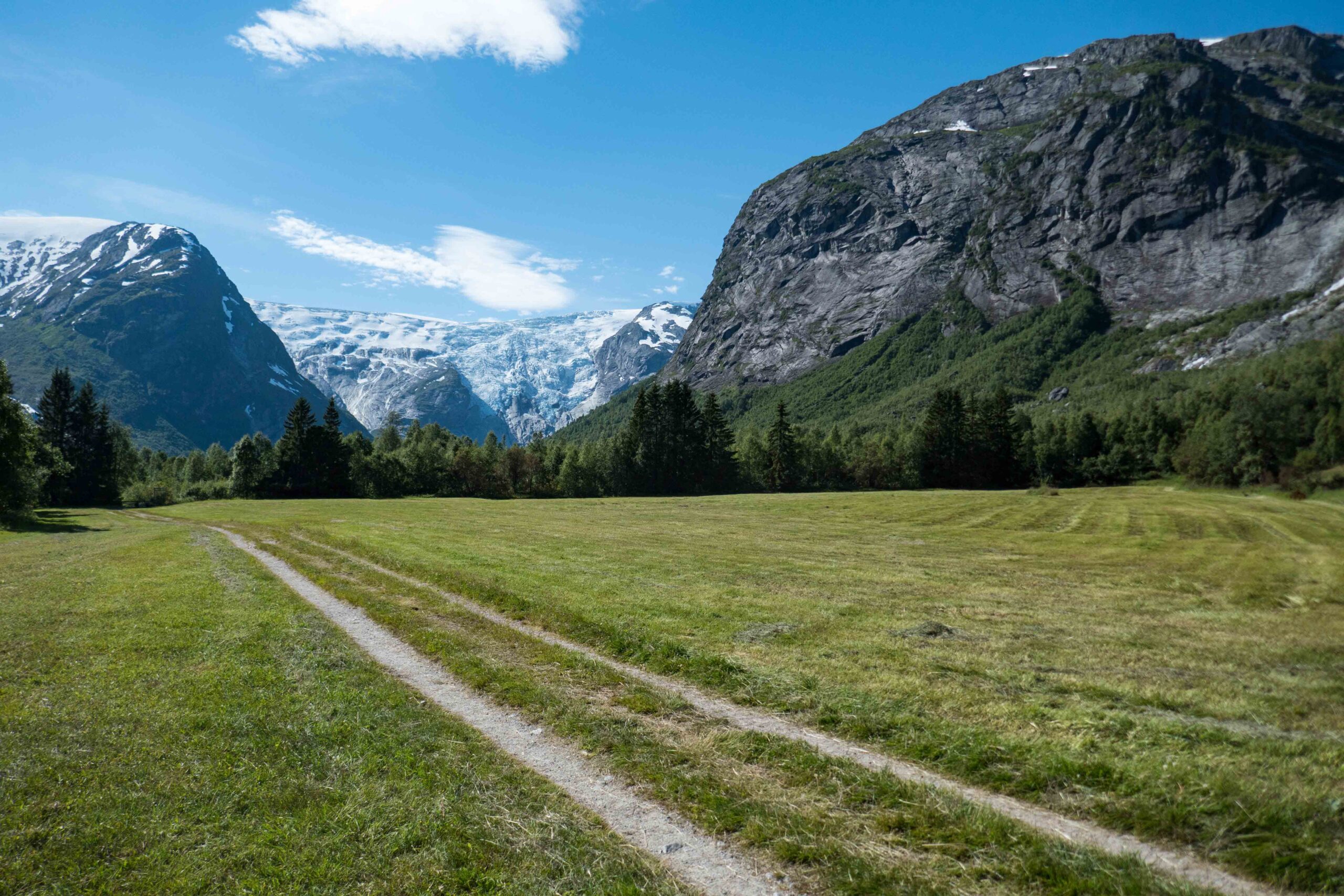
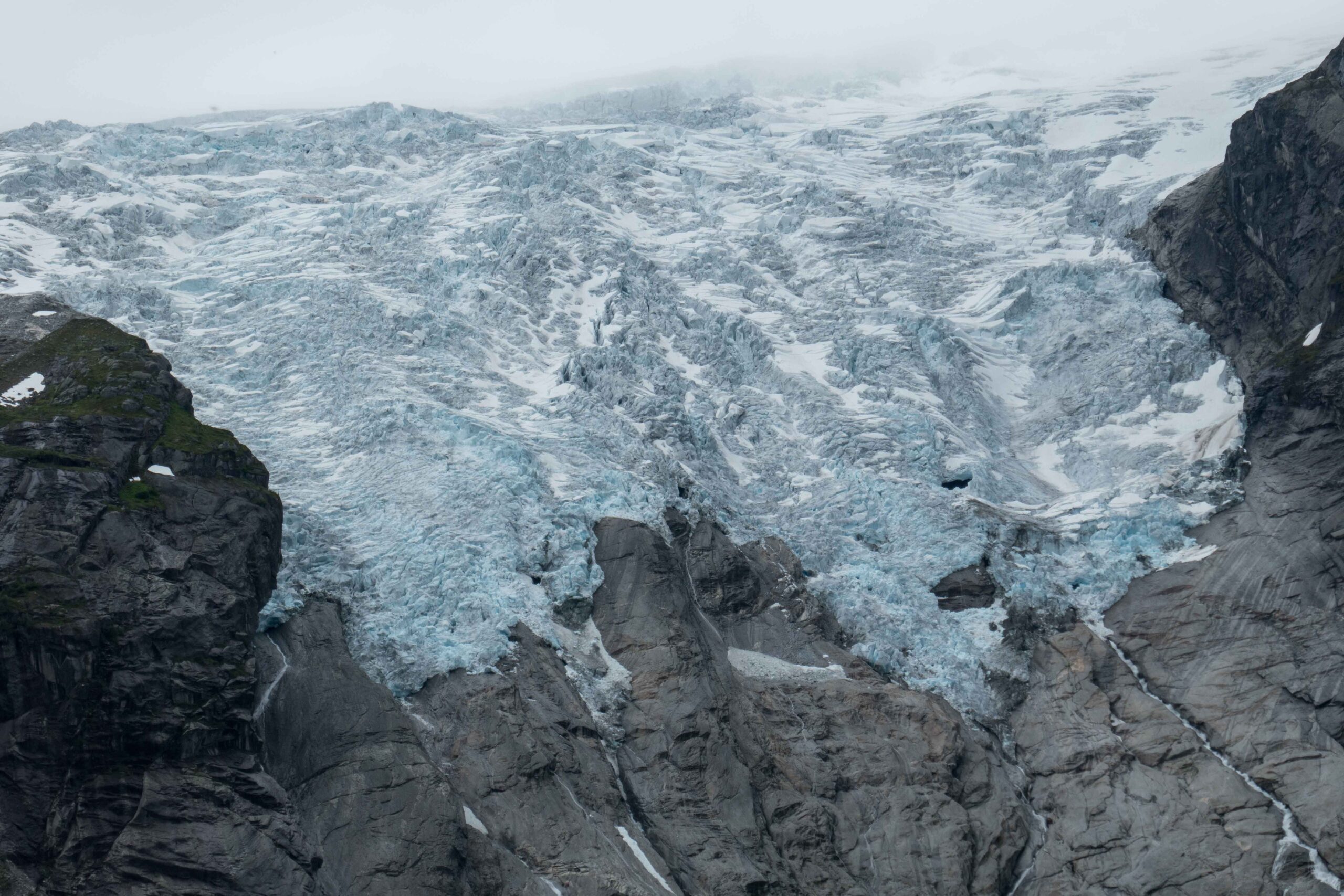
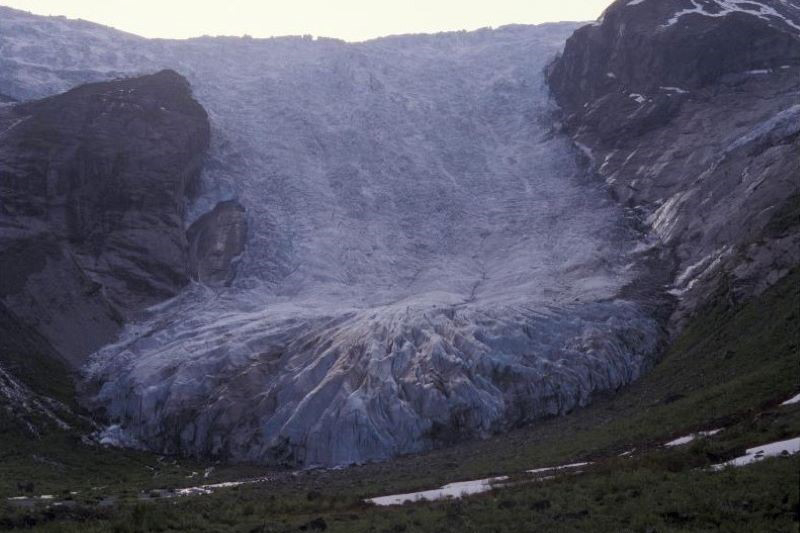
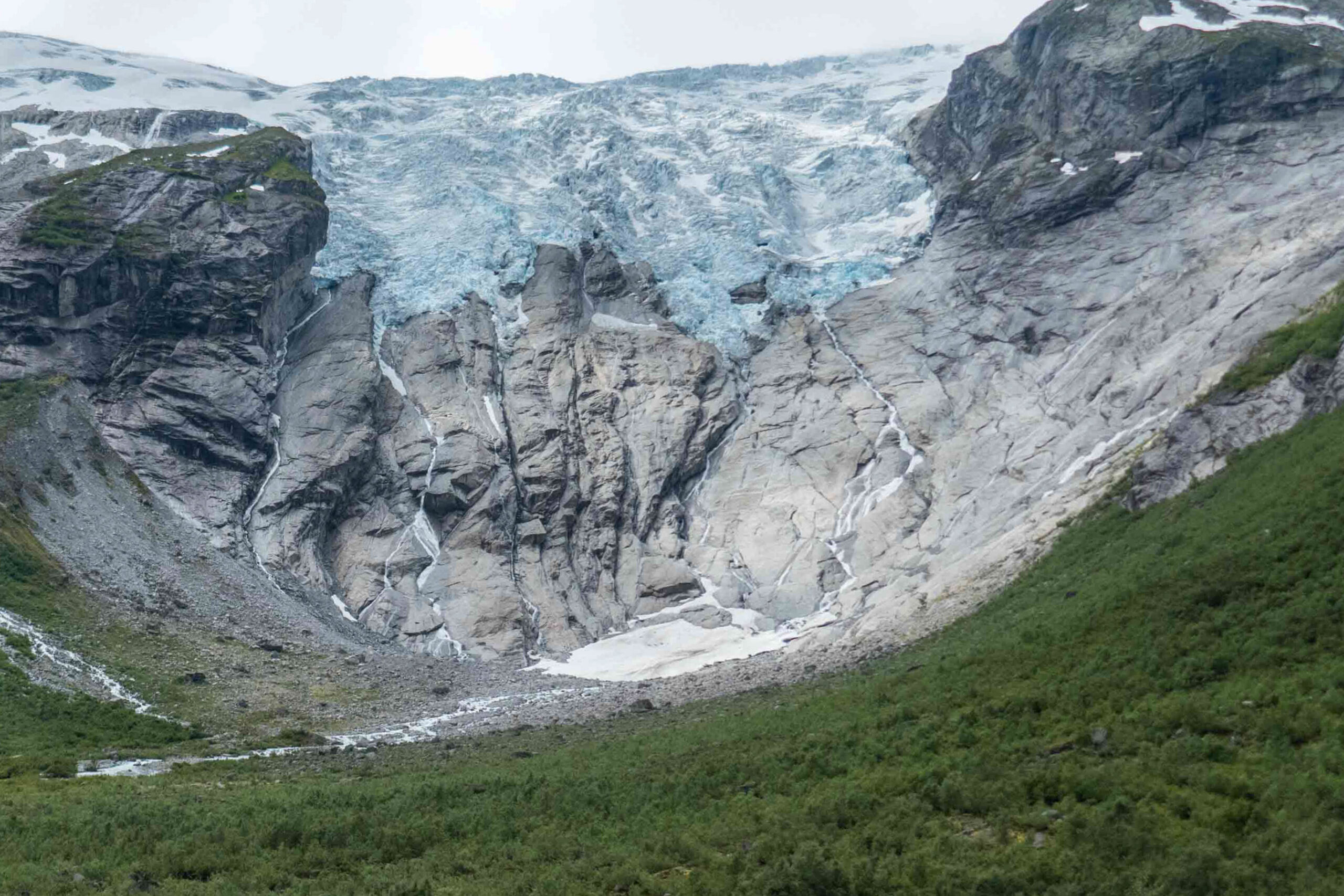
Bergsetbreen in 1996 (left) and 2020. Source 1996: Hallgeir Elvehøy, Glacier Periodic Photo NVE.
The last time Bergsetbreen got the hang of it was in the 1990’s. As a result of multiple years with abundant snowfall, Bergsetbreen grew by hundreds of meters. The seemingly unstoppable glacier tumbled down onto the valley floor, reaching its maximum extent around 1998. Afterwards, the snout was separated from the steep part and completely melted in ten years.
Two centuries before, Bergsetbreen even extended multiple kilometers further and covered a big part of Krundalen. The hiking trail towards Bergsetbreen runs through forests that would have been covered by the glacier in the 18th and 19th century. In total, the glacier lost more than three kilometers since then.
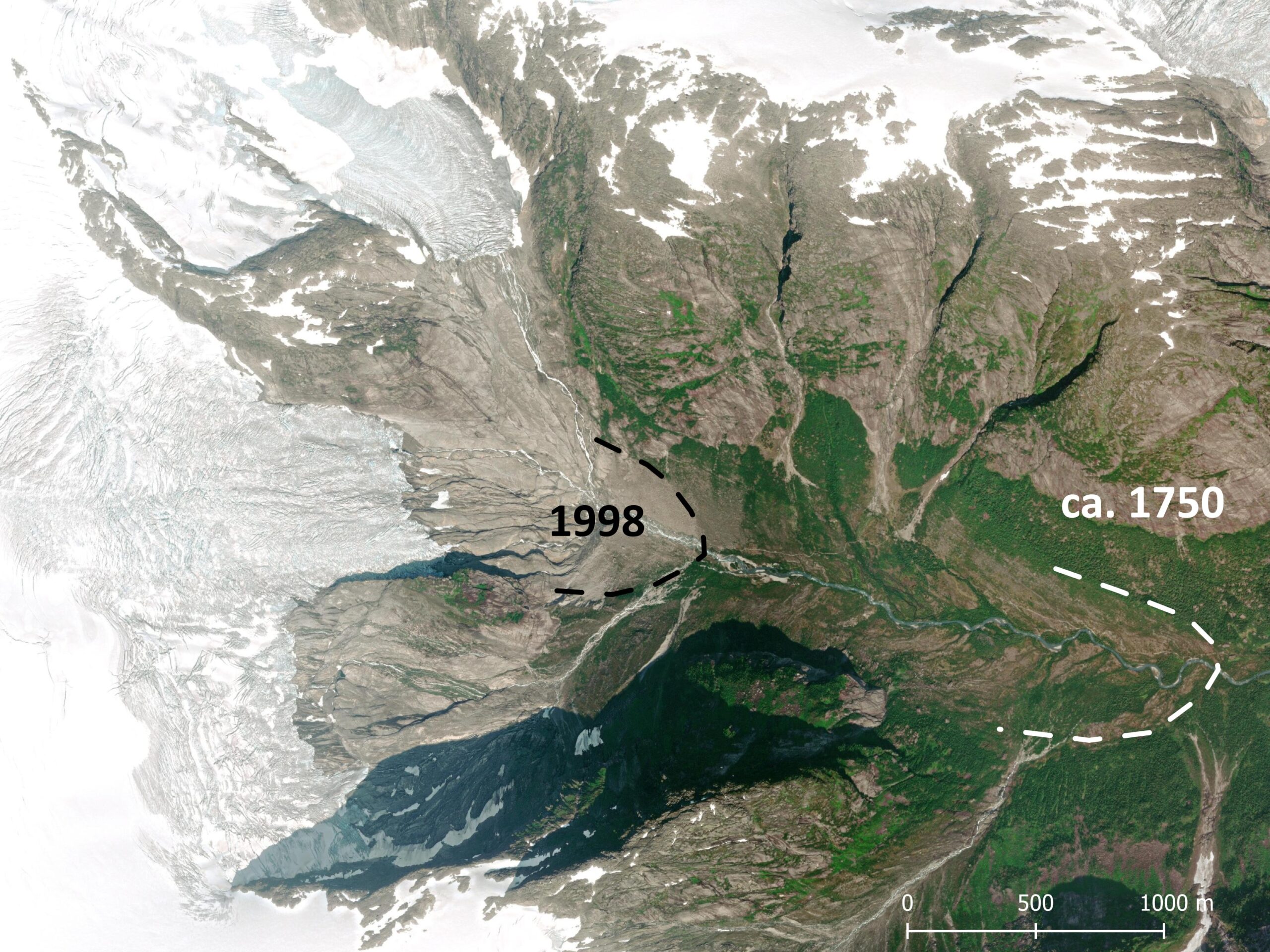
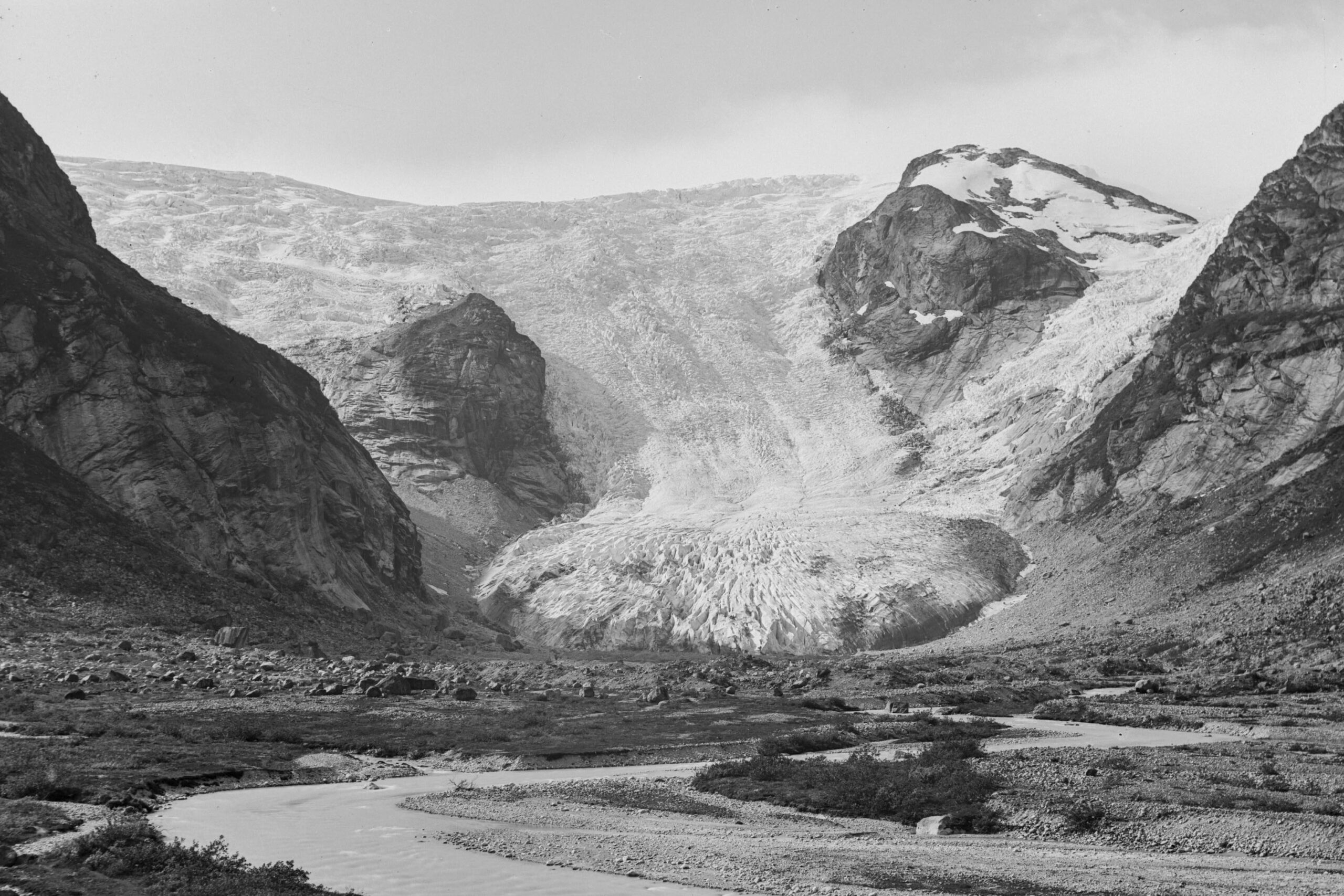
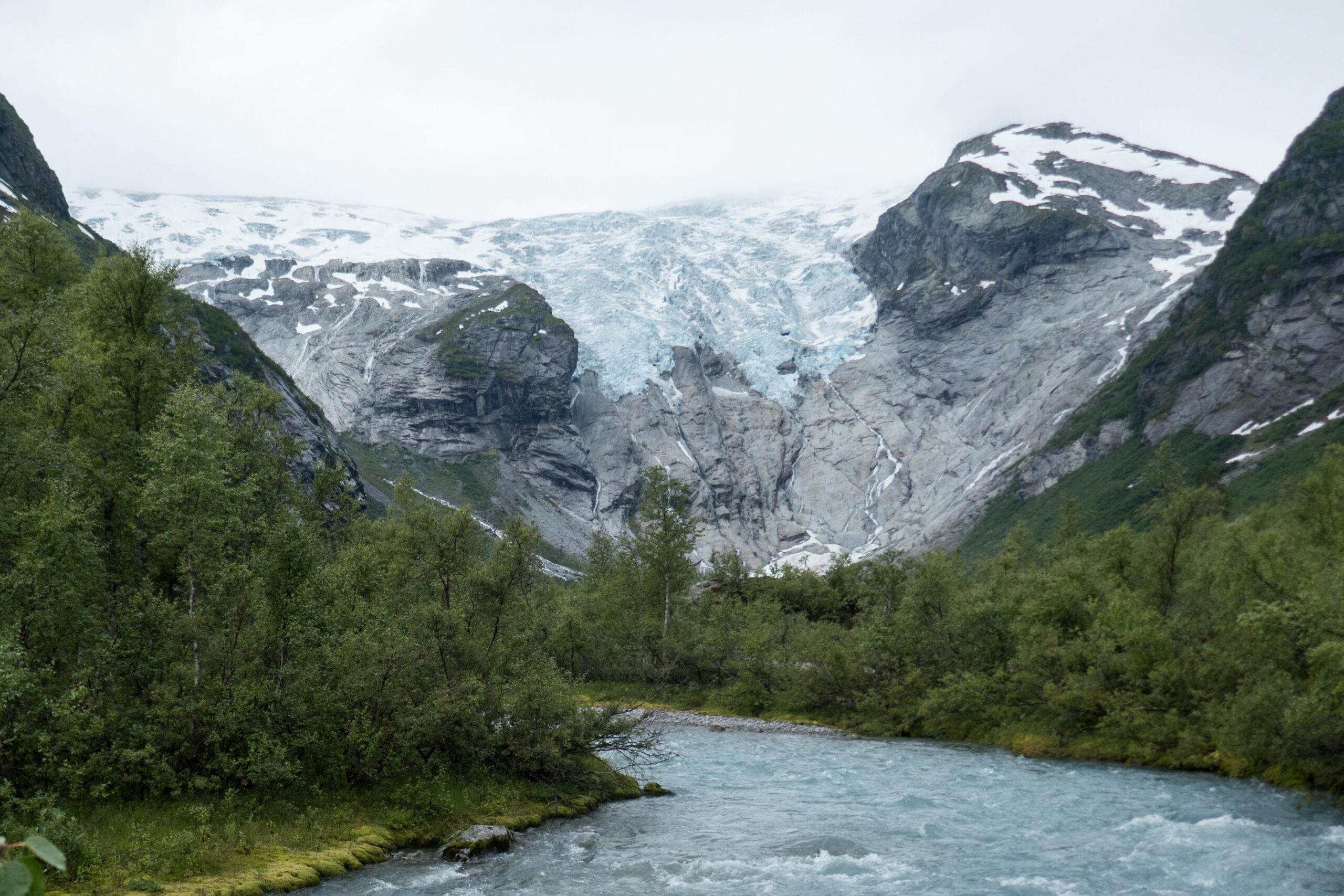
Bergsetbreen in 1906 (left) and 2020. Photographer 1906: John Bernhard Rekstad, University of Bergen Library photo ubb-jr-128-006.
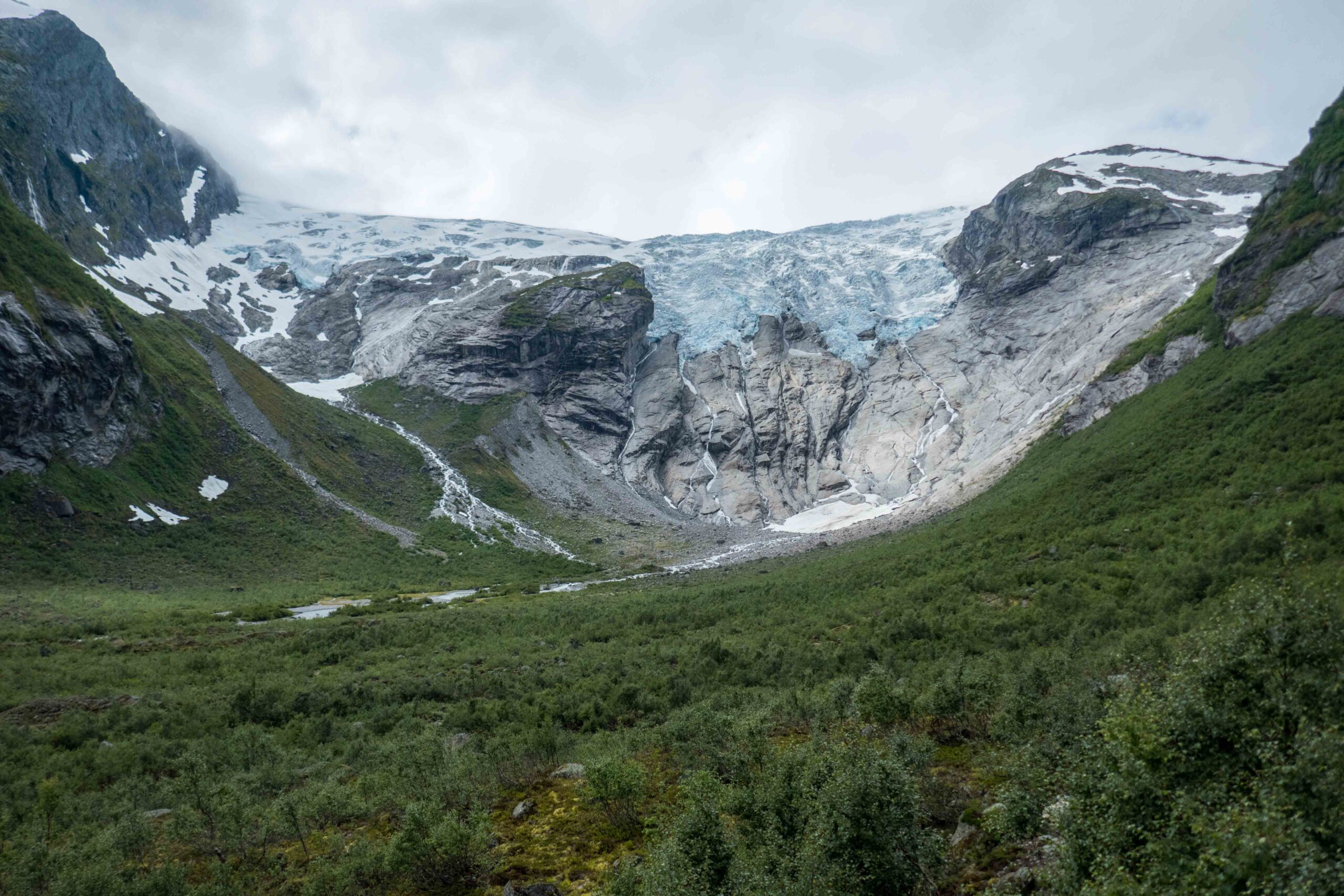
Nowadays, Bergsetbreen is no more than an icefall reaching halfway the valley floor. Despite the strong retreat, the glacier is still worth a visit. Chunks of ice sometimes break off and form a patch of ice at the bottom of the slope. The trail stops at two enormous boulders that offer a nice view over the head of Krundalen. From the differences in vegetation cover you can clearly see how much bigger Bergsetbreen was in the 1990’s.
Search within glacierchange: